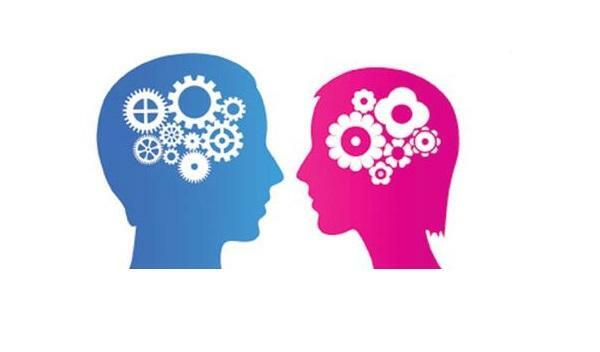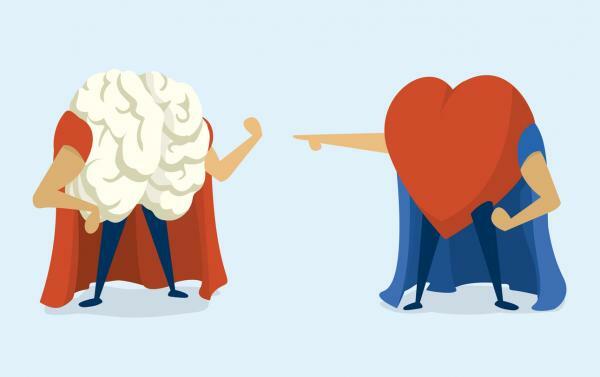
Do you understand your partner's behaviors less every day? Are men and women really that different? In 2006, the American neuropsychiatrist Louann Brizendine published her book She is the author of two books: The Female Brain, and The Male Brain (published in 2010). The female brain where he explained that the behavior of women is different from that of men due to their hormonal differences. Psychologist Daniel Goleman, guru of Emotional Intelligence, commented on the book that it was "a fresh and enlightening guide on women, and a must read for men." Given the success obtained from it, the author published in 2010, the continuation of it: The male brain.
Main differences between the male and female brain.
The results of both investigations reveal that every brain begins as female brain. It only becomes masculine eight weeks after conception, when excess testosterone (the king of hormones male) decreases the communication center, reduces the hearing cortex and makes twice as much the part of the brain as processes sex.
About him women's brain It is concluded that their hippocampus (brain structure involved in memory) is larger, as are the brain circuits for language and the observation of the emotions of others. (Women express emotions better and remember details of emotional events better.) In addition, her brain possesses outstanding mental agility, the ability to become deeply involved in friendship, an almost magic to read faces and tone of voice for emotions and moods, and great dexterity to deactivate conflicts. Female self-esteem is based on her ability to maintain affectionate relationships with others, since women women use both sides of the brain to respond to emotional experiences, whereas men only use a side. A biological example: Rhesus monkeys learn to vocalize much earlier than males and use each one of seventeen vocal tones of its kind throughout the day and always to communicate with each other Yes. In contrast, male Rhesus monkeys learn only three to six tones and, once they are adults, they allow days and even weeks without vocalizing them at all. Sound familiar?
For his part the men's brain, has two and a half times more brain space dedicated to sexual impulse, as well as the more developed brain centers for action and aggressiveness. Boys generally use language to order others around, get things done, brag, threaten, ignore a partner's suggestion, and smash other people's attempts to talk. His self-esteem is based on his ability to remain independent from others. Despite what has been said, the stereotype of a stoic and unemotional man is contradicted by research showing the dedication and devotion of the father's brain and the mature man. Hormonally the mature male brain more closely resembles the mature female brain; Men may be more receptive to oxytocin (the hormone of cuddling and affection). As men's testosterone levels decline, "win and lose" may lose relevance, in the interest of cooperation. (High testosterone = motivation to gain status and individual competition; Low testosterone = motivation to cooperate with others and intergroup competition.).
Therefore, there are notable differences between the two sexes in the social mechanisms and the brain units involved. Female sociability (which is more affiliative) is more closely related to the volume of the neocortex, while Male sociability (which is more competitive and combative) is more related to subcortical units (those associated with responses emotional).

Conclution.
We are almost oblivious to the underlying, almost hidden work that the various genes, neurochemicals and hormones perform. If men and women, parents and teachers, we started with a better understanding of our male and female brains, how are formed, how they are modeled in childhood and how they come to see reality during adolescence and later, we could create some more realistic expectations for both. Much of the conflict that exists between men and women is due to the inability to understand these innate differences, the tendencies of their brains and their physical responses to hormones that condition their natural urges and the way they think, feel, and communicate.
The good news is that despite these biological conditioning factors, neuropsychiatrist Louann Brizendine concludes that brain architecture is not set in stone at birth or late childhood, as was previously believed, but keeps changing throughout life. Rather than being immutable, our brains are much more plastic and changeable than scientists believed a decade ago. The human brain is also the most ingenious learning machine we know of. So the culture and behavioral principles that are instilled in us greatly influence the shaping and remodeling of the brain. Thus, education, experience and environment can exert a lasting behavioral and biological influence through epigenetic changes introduced in DNA.
In conclusion, and despite these small differences there are more things that make us similar to men and women than those that differentiate us, and never forget that it is always possible to learn, unlearn and relearn.
Explanatory video about the differences between the brain of women and men.
This article is merely informative, in Psychology-Online we do not have the power to make a diagnosis or recommend a treatment. We invite you to go to a psychologist to treat your particular case.
If you want to read more articles similar to Differences between the male and female brain, we recommend that you enter our category of Cognitive psychology.


